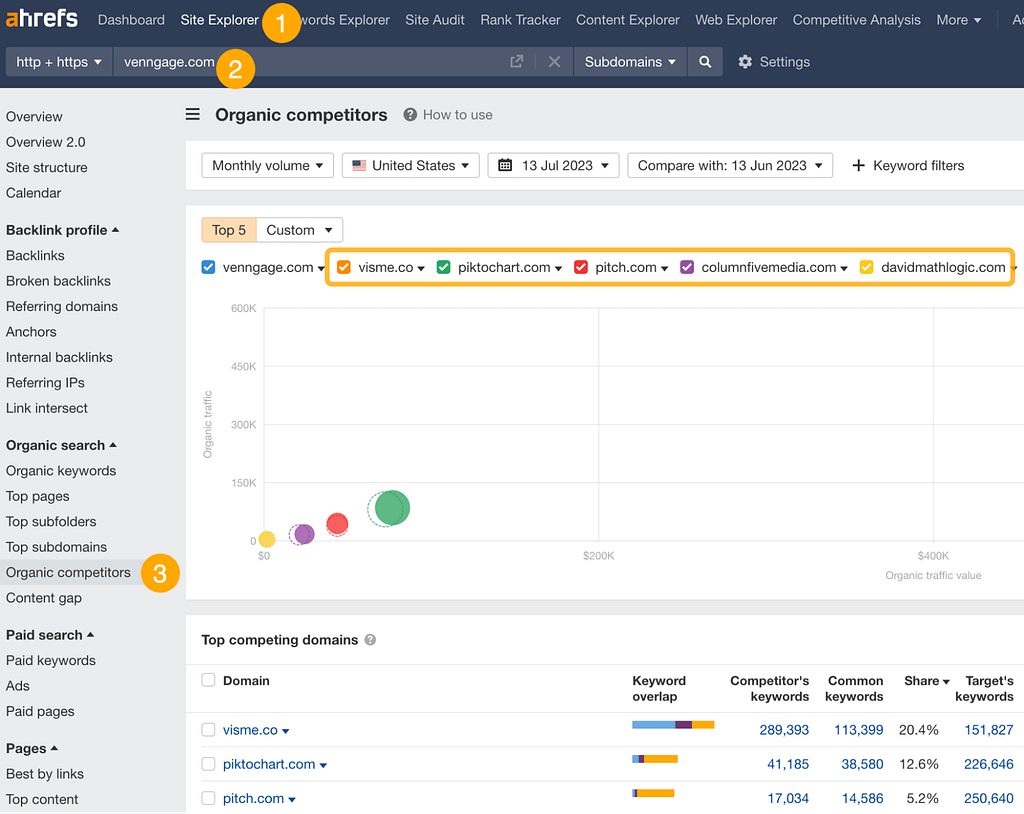Funnel Hacking 101: Definition, Benefits & Implementation
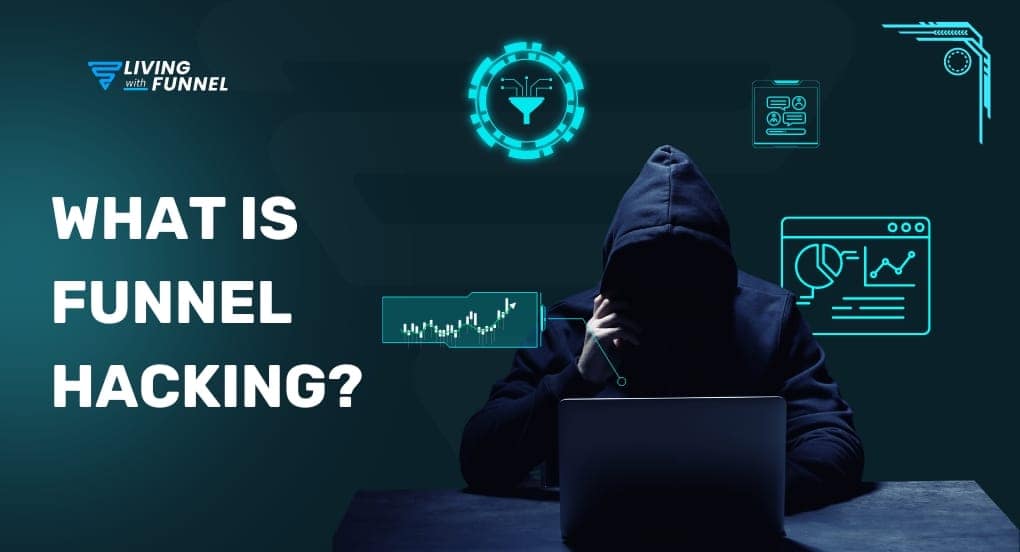
Hey there, welcome to the Funnel Hacking lesson!
Many entrepreneurs waste COUNTLESS HOURS and DOLLARS trying to reinvent the wheel.
But here’s the thing: YOU DON’T HAVE TO.
Funnel Hacking is the secret weapon of savvy marketers everywhere.
We often think we need to be creative entrepreneurs, figuring everything out from scratch. But that’s NOT how it works.
In every market, there are people spending MILLIONS on testing and tweaking their funnels.
As a small business or solopreneur, your job isn’t to start from zero. It’s to find what’s already working and make it EVEN BETTER.
In this guide, you’ll discover how to:
- Ethically “hack” your competitors’ most successful funnels
- Save time, money, and headaches
- Build high-converting funnels FASTER than ever before
We’ll walk you through the entire process step by step. From finding prime targets to building your own optimized funnel.
By the end, you’ll have all the tools you need to start funnel hacking like a pro and SKYROCKET your conversions.
Ready to stop guessing and start growing? Let’s dive in!
What Is Funnel Hacking?

Picture this: You’re browsing online, looking for the perfect pair of running shoes. Suddenly, an ad catches your eye. You click, and before you know it, you’ve signed up for a newsletter, watched a product demo, and are one click away from buying those shiny new kicks.
That, my friend, is a sales funnel in action.
And Funnel Hacking?
It’s like being a marketing detective, uncovering the secrets behind these irresistible customer journeys.
Funnel hacking is the process of analyzing and reverse-engineering your competitors’ successful marketing funnels to create your own high-converting sales process. It’s about understanding what makes their funnels tick and using those insights to build something even better for your own business.
The term “Funnel Hacking” was popularized by Russell Brunson, co-founder of ClickFunnels.
It has since become a movement, with ClickFunnels enthusiasts proudly calling themselves “Funnel Hackers” and gathering at the annual “Funnel Hacking Live“ event.
This concept is rooted in a powerful idea from Tony Robbins:
If you want to achieve success, all you need to do is find a way to model those who have already succeeded.
Here’s a Funnel Hacking process:
- Identifying successful competitors in your target market.
- Analyzing their traffic sources and ad strategies.
- Mapping out their entire sales funnel, from landing page to checkout.
- Studying their sales and marketing process, layout, offer structure, and price point.
- Use these insights to create your own marketing funnel.
Funnel Hacking Is NOT Stealing
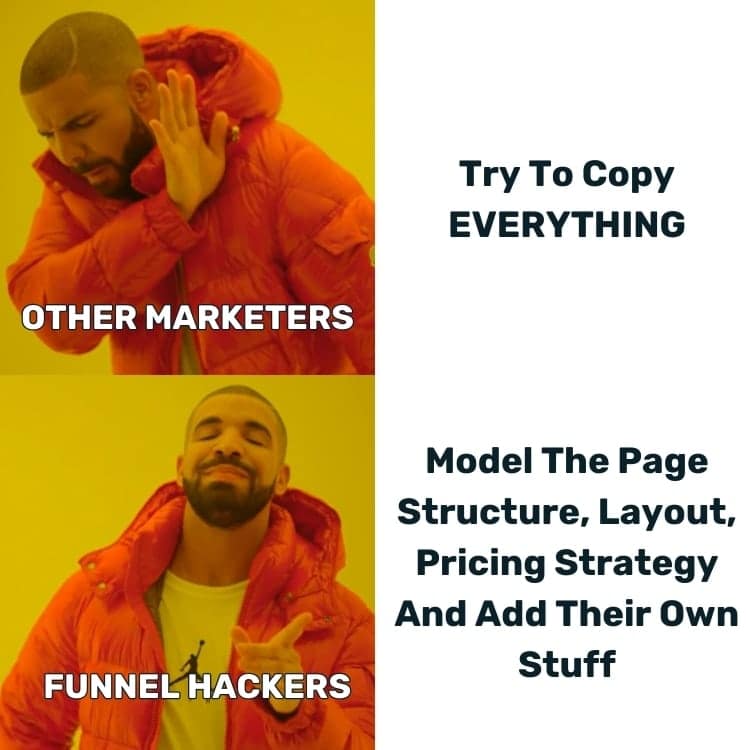
Now, before we go any further, let’s clear the air on a crucial point:
Funnel hacking is NOT about copying or stealing your competitors’ work.
That’s not just unethical – it’s illegal and can land you in hot water faster than you can say “cease and desist.”
Funnel hacking is about inspiration, not imitation. It’s studying the underlying principles and strategies that make a sales funnel successful, then applying those concepts to your own unique offerings.
Think of it like a chef tasting a delicious dish at a restaurant and then going home to create their own spin on it—the same basic ingredients, but with a flavor all its own.
Here’s what you should NEVER do when funnel hacking:
- Copy exact sales copies or images from competitor sites
- Steal proprietary products or services
- Use trademarked names or logos without permission
- Misrepresent yourself as a competitor’s business
Remember, the goal is to understand the successful recipe, not plagiarize the menu. By focusing on the underlying strategies and adapting them to fit your brand and audience, you’ll create an effective and authentic funnel.
Benefits Of Funnel Hacking
Now that we’ve clarified what funnel hacking is (and isn’t), let’s talk about why it’s such a game-changer for businesses of all sizes. Here are some of the key benefits you can expect when you start funnel hacking:
- Accelerate Growth: By studying what works for industry leaders, you can implement proven marketing processes to accelerate your growth.
- Save Time and Money: Avoid the costly trial-and-error phase by leveraging insights from effective sales funnels. This allows you to focus your resources on strategies that are more likely to succeed.
- Gain Competitive Advantage: By understanding what’s working in your industry, you can position your offers more effectively and stay ahead of the curve.
- Improve Conversion Rates: Apply tested and proven tactics to boost your conversion rates, turning more leads into paying customers. It’s like having a cheat sheet for what makes your target audience tick.
- Discover New Marketing Strategies: Funnel hacking often reveals innovative tactics you might not have considered. It’s a great way to keep your marketing fresh and effective.
- Innovate: Discover new marketing strategies and ideas you might not have considered, keeping your marketing fresh and effective.
As Tony Robbins, a mentor to Russell Brunson, wisely said: “If you want to achieve success, all you need to do is find a way to model those who have already succeeded.”
Funnel hacking puts this principle into action, giving you a shortcut to creating high-performing marketing funnels.
How To Funnel Hacking (Step-by-Step)
Ready to put on your detective hat and start funnel hacking?
Let’s break down the process into manageable steps.
By following this roadmap, you’ll be well on your way to uncovering the secrets of successful funnels in your industry.
Prepare
Before diving into funnel hacking, getting your ducks in a row is crucial. Here’s what you need to do:
- Funnel Hacking tools you need:
- A way to capture full-page screenshots (try the GoFullPage browser extension)
- A spreadsheet or document to track your findings
- A VPN (optional but helpful for seeing location-specific ads)
- Adopt the Right Mindset: Remember, you’re here to learn and improve, not to copy. Stay curious and open-minded.
With your toolkit ready and your detective mindset in place, you’re all set to start your funnel-hacking journey.
Step 1: Create A List Of Competition
Before launching any new funnel, I laser-focus on strategy.
First, I chose the funnel type (I shared funnel strategies in Chapter 2). Then, I hunt down every sales funnel example in my target market, dissecting and analyzing their frameworks.
Finally, I build my own sales funnel, cherry-picking the best elements I’ve discovered.
Here’s how to build your competitor list:
- Direct Competitors: These are businesses selling products or services very similar to yours. They’re your most obvious targets.
- Indirect Competitors: Look for companies selling different products but to the same target audience. They might have funnel strategies you can adapt.
Pro Tip: Use tools like SEMrush or Ahrefs to find competitors’ rankings for your target keywords. Also, check out who’s running ads on Google and Facebook for related search terms.
Don’t panic if you can’t find a direct or indirect competitor who has a successful business by building sales funnels.
The beauty of funnel hacking is its FLEXIBILITY.
Say you’re planning a webinar to sell your revolutionary cat toys – you can model any successful webinar funnel, even if it’s selling online courses or fitness equipment.
Want to generate leads for your artisanal cheese business? Study lead magnet funnel in the tech industry or personal development space.
Clickbank is one of the best places.
You can check out the top Clickbank offers article or browse their marketplace to find many profitable funnels available.
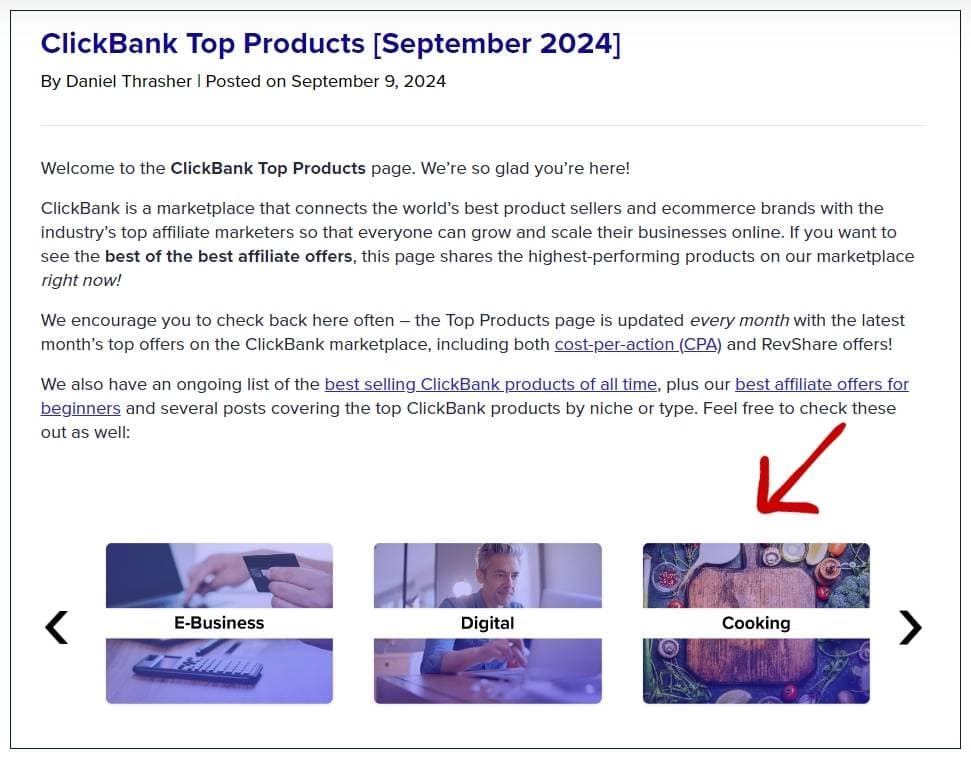
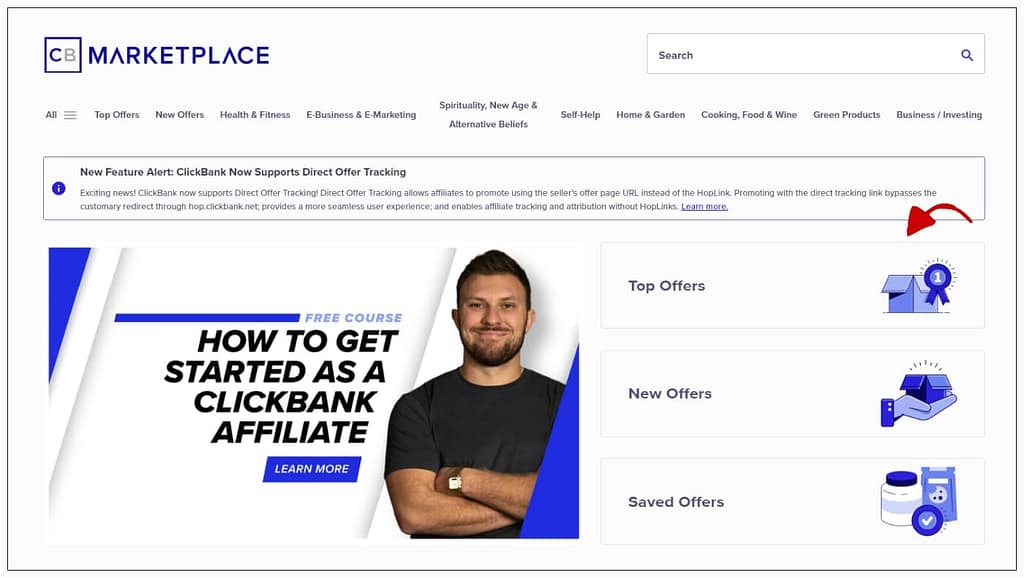
In the Clickbank Marketplace, you can:
- Filter products by niche on the left-hand side
- View the product name in the middle
- Filter by Gravity from high to low on the right-hand side.
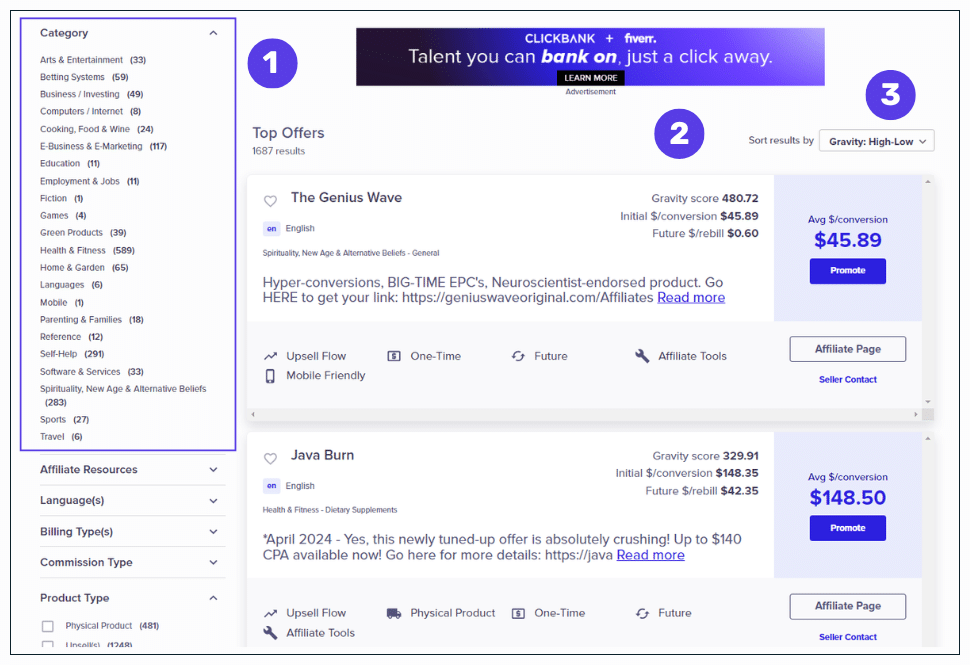
Consider opting for a product with high Gravity, indicating that it’s promoted by numerous affiliate marketers. Also, examine the refund rate to ensure it has a successful sales funnel.
😍 Remember, we’re not copying – we’re borrowing the blueprint. The core structure works across markets, so feel free to get creative with your inspiration sources. The key is to spot what’s working and adapt it to your unique offering.
Step 3: Traffic Hacking
Now, you have a list of your competitors.
To perform funnel hacking, you need to study your competitors’ entire sales process to understand the Hooks, Stories, and Offers on all their advertisements and funnel pages.
I start by acting like a regular customer. Then, I use Google to search for keywords related to the product I’m interested in.
I find Similarweb.com quite helpful.
The free version of Similarweb allows me to review my competitor’s website traffic and identify its sources.
For instance, when I assessed Adcreative.com, I discovered that most of their traffic comes from Direct and Paid Search (39.55%).
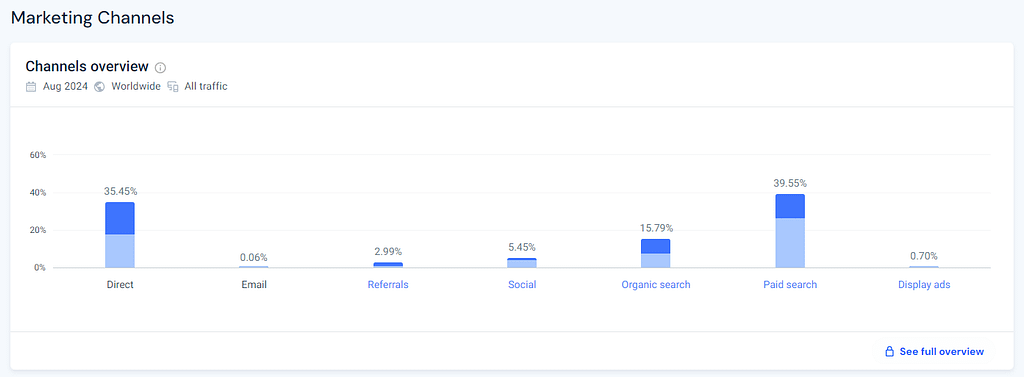
They also get significant traffic from Facebook and YouTube.

Although Similarweb provides a list of organic and paid keywords, the free version has its limitations. I mainly use Ahref or SEMRush for this purpose.
Next, I search for paid ads that I can click on to lead me to a funnel. I also turn to Facebook for this purpose.
I “like” related pages, hoping Facebook will start displaying ads for similar products.
When I start seeing ads, I note the hook, story, and offer. Then, I click on the ad to see where it takes me.
(The reason for “liking” related pages is to prompt Facebook to display similar ads, thereby expanding my list of competitors for Funnel Hacking.)
💡 Pro tip: You can use Facebook’s Ad Library to see all the ads a Facebook page runs.
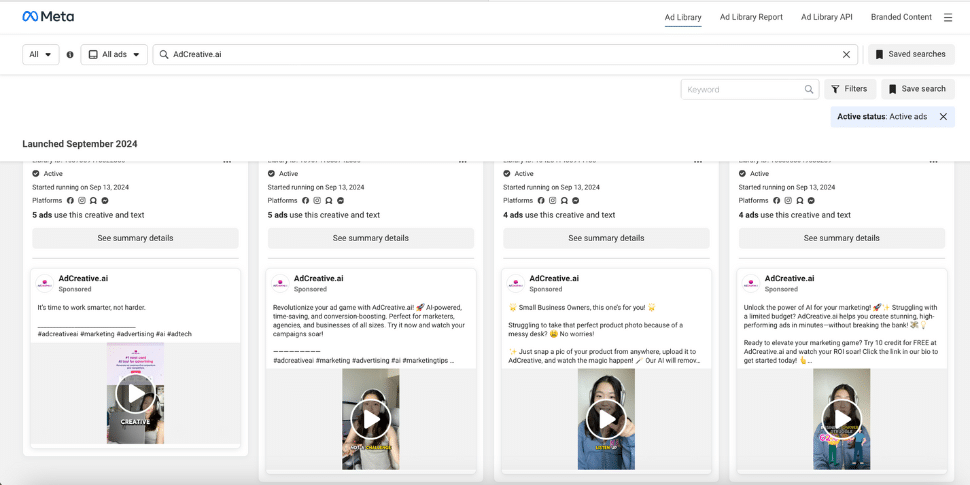
Similarly, with Google, you can observe the ads companies or individuals run.
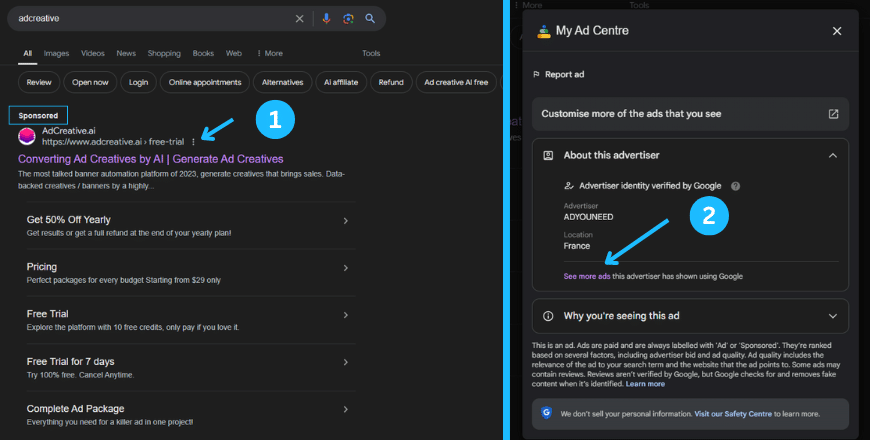
And here is the result.
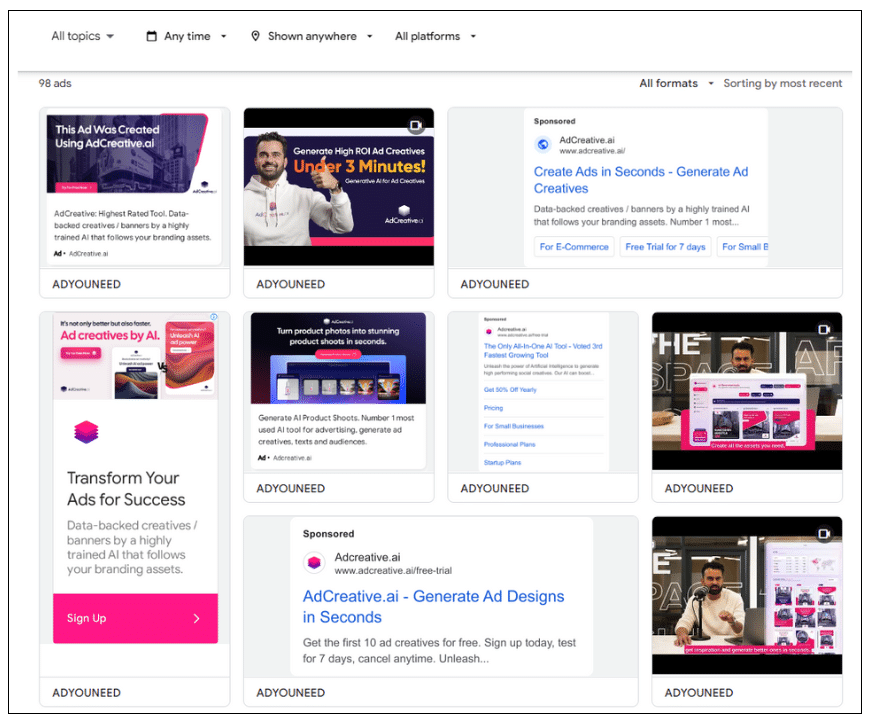
Sometimes, those ads lead you to a Presell Page.
Other times, it’s a landing page trying to get your email address, or it takes you directly to a video sales letter page.
Regardless of where it is, you observe (Funnel Hacking) the sales process.
Step 4: Reverse Engineering Competitor’s Sales Funnel
After clicking on an ad, I land on a landing page. Here’s what I do next:
First, I look at the page carefully and write down three things:
- The Hook: What grabs my attention right away?
- The Story: What interesting information are they sharing?
- The Offer: What are they trying to sell me?
For example, when “funnel hacking” the Copywriting Secrets funnel, I start by visiting the sales page and taking notes on the hook, story, offer, and other useful information.
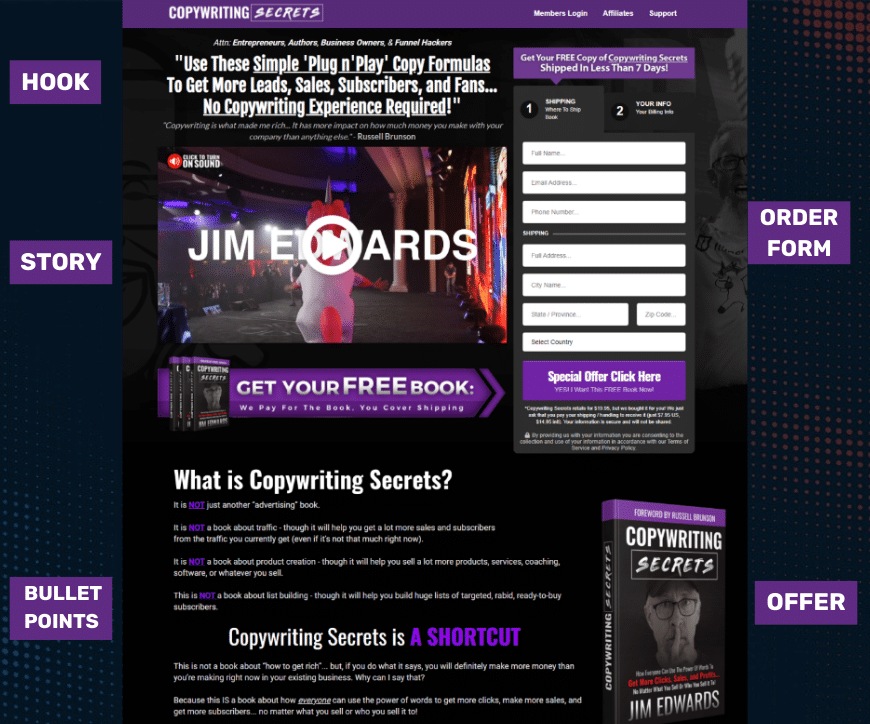
- Hook: “Use These Simple ‘Plug n’ Play’ Copy Formulas To Get More Leads, Sales, Subscribers, and fans… No Copywriting Experience Required!”
- Story: A long-form sales letter includes Jim Edwards’s backstory, the book’s benefits, testimonials, and a guarantee.
- Offer: Get a free copy of the Copywriting Secrets book, just cover $7.95 US or $14.95 international for shipping/handling.
Now, you should save the URL of each page in the sales funnel and use the GoFullPage extension to capture the entire page.
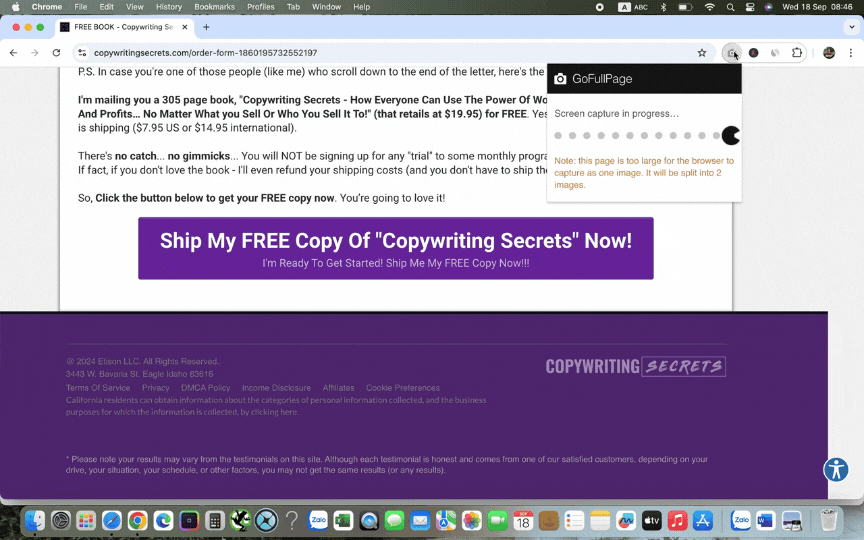
I do the same thing on the order form, upsell, downsell, and thank you page.
Finally, you have the entire sales funnel framework.
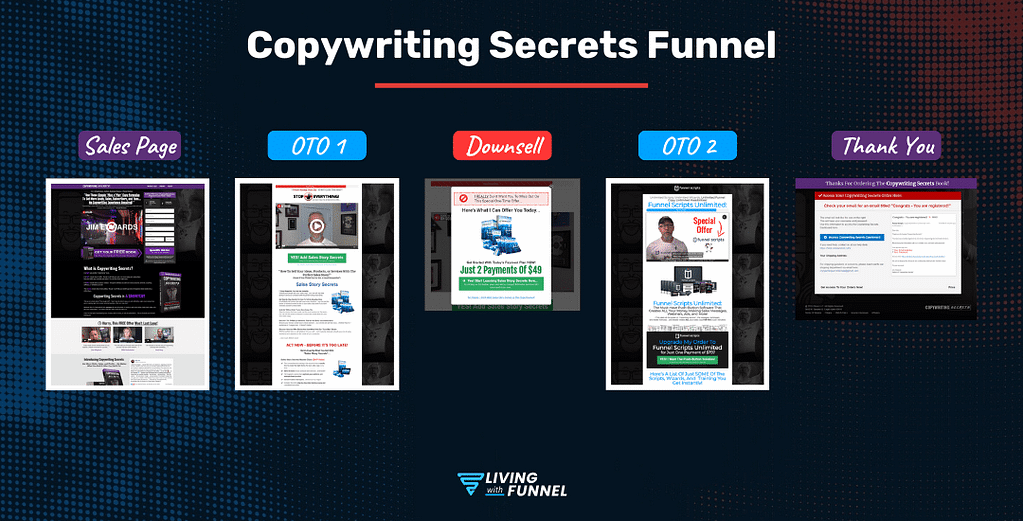
This is your market research. You’re figuring out exactly how others succeed.
Don’t stop at one funnel. Analyze at least six to spot trends and see what’s working now. This gives you a baseline to beat.
Now, put on your marketing consultant hat. For each sales funnel, think:
- How could you make that hook sexier?
- How could you tell the story more effectively?
- What could you add to make offers and upsells even more irresistible?
Your goal: Create better hooks, stories, and offers than your competitors. This will draw dream customers to you instead.
By thinking this way, you’re training your marketing brain. This will make building your own funnels easier later.
Remember to analyze multiple funnels, look for frameworks, and improve on what you find. This process will set you up to outperform the competition.
Step 5: Build Your Own Sales Funnel
Now comes the fun part – taking what you’ve learned and applying it to your own funnel. Remember, the goal isn’t to copy, but to innovate and improve.
Here’s how to build your funnel:
- Choose Your Funnel Structure: Based on what you’ve seen, decide on the overall structure that makes sense for your business.
- Craft Your Unique Value Proposition: What can you offer that’s better or different from your competitors?
- Design Your Pages: Use what you’ve learned about effective layouts and content, but make it your own.
- Write Compelling Copy: Focus on benefits, not just features. Tell a story that resonates with your audience.
- Create Irresistible Offers: Look at how your competitors structure their offers and think about how you can go one better.
- Set Up Your Tech: Choose a funnel-building platform (like ClickFunnels or Kartra) and implement your design.
Remember Russell Brunson’s advice: “This game is all about looking at what’s working and modeling it now!” But don’t just model – improve and innovate.
Step 6: Testing and Optimization
Your funnel is live – but your work isn’t done. The final step in funnel hacking is continual testing and optimization.
Here’s how to keep improving:
- Set Up Analytics: Use tools like Google Analytics and heatmaps to track user behavior.
- A/B Test Key Elements: Experiment with different headlines, images, CTAs, and offers.
- Monitor Key Metrics: Keep a close eye on conversion rates at each step of your funnel.
- Gather User Feedback: Use surveys or user testing to get qualitative insights.
- Stay Up-to-Date: Keep funnel hacking your competitors to stay ahead of industry trends.
Remember, the most successful marketers always test and tweak. Your funnel should be a living, evolving entity that improves over time.
Common Funnel Hacking Mistakes
Even the savviest marketers can stumble when it comes to funnel hacking. By being aware of these common pitfalls, you can avoid them and make your funnel hacking efforts more effective.
1. Copying Without Understanding The Strategy
It’s tempting to see a successful funnel and think, “I’ll just do exactly that!” But remember, what you see on the surface is just the tip of the iceberg.
Mistake: Blindly copying design elements, copy, or offers without understanding the underlying strategy.
Solution: Always ask “why” something is done a certain way. Try to understand the psychology behind each element of the funnel. This deeper understanding will help you adapt strategies more effectively for your business.
You can read the Dotcom Secrets book or enroll in the One Funnel Away Challenge for a deep dive into this.
2. Not Adapting The Funnel To Your Audience
Your competitors’ audience isn’t exactly the same as yours, even if there’s overlap. This is a crucial point that many marketers overlook when funnel hacking.
Mistake: Assuming what works for your competitor will work identically for you.
It’s tempting to think, “Hey, if it’s working for them, it’ll definitely work for me!” But hold your horses, funnel hacker.
That’s like assuming your neighbor’s prize-winning rose fertilizer will work miracles on your cactus garden. Sure, they’re both plants, but the needs are wildly different!
Solution: Use competitor insights as a starting point, but always tailor your funnel to your specific audience. Consider your unique value proposition, brand voice, and customer needs.
Think of funnel hacking as inspiration, not a carbon-copy blueprint. Here’s how to avoid the “copy-paste trap”:
- Analyze, don’t plagiarize: Study your competitor’s funnel structure, but fill it with your own unique content.
- Know your customer: Dive deep into your audience’s pain points, desires, and behaviors. How are they different from your competitors’?
- Embrace your quirks: Your brand personality is your secret sauce. Let it shine through every stage of your funnel.
- Test, tweak, repeat. What works for others might flop for you (and vice versa). Always test and optimize based on your audience’s responses.
- Add your special twist: What can you offer that your competitors can’t? Maybe it’s stellar customer service, a unique product feature, or a killer guarantee. Make it the star of your funnel.
Remember, the goal of funnel hacking isn’t to become a clone of your competitor. It’s about standing on their shoulders to reach even greater heights. So, take those insights, mix them with your secret sauce, and create a funnel that’s uniquely, irresistibly YOU.
3. Focusing Only on Surface-Level Elements
It’s easy to get caught up in the visuals and forget about the underlying structure and strategy. Don’t be like a magpie, distracted by shiny objects – there’s gold beneath the surface!
Mistake: Obsessing over design details while ignoring crucial elements like offer structure or follow-up sequences.
Picture this:
You’ve spent hours perfecting your landing page design, agonizing over button colors and font choices.
Meanwhile, your competitor’s “ugly” page is outperforming yours because they’ve nailed their offer and follow-up strategy.
Ouch!
Solution: Pay attention to the entire customer journey. Look at how competitors nurture leads, structure their offers, and maximize customer lifetime value.
Think of funnel hacking like exploring an iceberg – what you see above the surface is just the tip. Here’s how to dive deeper:
- Be a real customer: Don’t just window shop. Sign up, make purchases, and experience the full journey. You might discover hidden gems in the post-purchase experience.
- Track the communication: What happens after you subscribe or buy? Analyze the email sequences, timing, and messaging. Are they upselling? Providing valuable content? Asking for referrals?
- Map the entire ecosystem: Look beyond a single funnel. How do they connect multiple products or services? Is there an ascension model to higher-ticket offers?
- Analyze the long game: What happens a week or a month after your initial interaction? How do they re-engage cold leads or past customers?
- Study the offer architecture: Break down how they structure their offers. Are there order bumps, one-time offers, or subscription models?
Example:
I once saw a marketer use a special tool, which helps you easily explore the entire hidden funnel’s landing pages without buying or subscribing. (It’s awesome, right?)
After that, he spends days recreating a competitor’s flashy sales page using funnel-building software. He thought he’d cracked the code. But he missed the real magic:
- The competitor’s seemingly simple opt-in led to a carefully crafted 5-day email sequence that built massive trust before the sale.
- There was a low-ticket tripwire offer that 30% of subscribers took, priming them for the main offer.
- Non-buyers received a downsell two days later, capturing another 15% of the market.
- A month after purchase, customers were invited to an exclusive mastermind group, dramatically increasing customer lifetime value.
The flashy page was just the entry point. The real profits came from the hidden layers of the funnel – layers our surface-level hacker completely missed.
Remember: Don’t just admire the wrapping paper. Unwrap the whole package to discover the true gifts of funnel hacking!
4. Failing To Continuously Test and Optimize
Funnel hacking isn’t a one-and-done process. The digital landscape is always changing.
Mistake: Setting up a funnel based on competitor insights and then leaving it to run indefinitely.
Solution: Treat your funnel as a constant work in progress. Regularly test new ideas, monitor performance, and be ready to adapt to changing market conditions.
What Are the Limitations of Funnel Hacking?
While funnel hacking is a powerful strategy, it’s not without its limitations. Understanding these constraints will help you use funnel hacking more effectively and know when to rely on other methods.
Lack of Context and Behind-the-Scenes Information
When you’re funnel hacking, you’re only seeing the public-facing side of a competitor’s strategy. You don’t have access to their internal data, customer feedback, or the reasoning behind their decisions.
This means you might be missing crucial context that explains why certain elements are effective (or not) for that particular business. A seemingly successful funnel might actually be underperforming based on the company’s goals, or vice versa.
For example, consider ClickFunnels’ free trial funnel.
On the surface, it looks like a standard SaaS marketing strategy that many companies use. However, if you dig deeper, you’ll notice that ClickFunnels rarely sends people directly to their sales page.
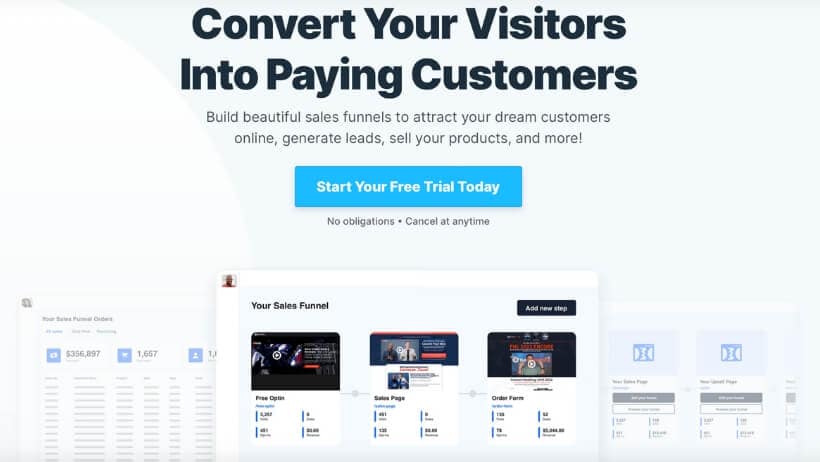
Instead, they often offer free books (like “DotCom Secrets”) or challenges (like the “One Funnel Away Challenge”) before promoting ClickFunnels itself.
This approach is part of a larger value ladder and customer journey that isn’t immediately visible when you’re just looking at their free trial funnel.
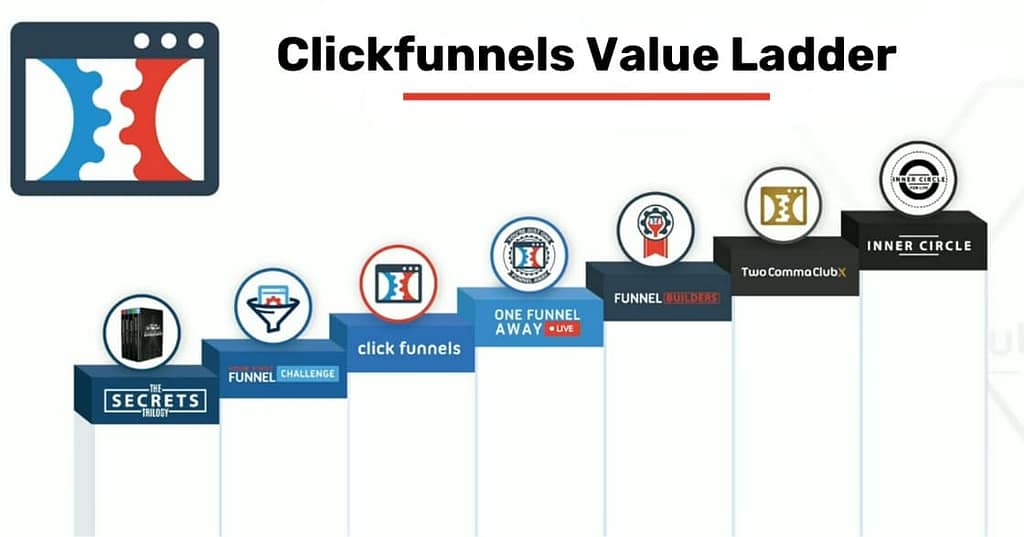
Many SaaS companies struggle to get new customers while seemingly doing the same thing as ClickFunnels, but they’re missing this crucial context.
When you analyze competitor sales funnels, you often don’t see:
- The entire picture
- What stage the funnel represent in their overall value ladder
- How it fits into the broader customer journey
To mitigate this:
- Use funnel hacking insights as a starting point
- Always test and validate strategies with your own audience
- Don’t assume what works for a competitor will automatically work for you
- Try to gather information about the broader context of a competitor’s marketing strategy, not just individual funnels
Outdated or Ineffective Strategies
The digital marketing landscape evolves rapidly. What worked last year (or even last month) might not be effective today.
When you’re funnel hacking, you might inadvertently pick up on strategies that are already on their way out. Additionally, just because a competitor is using a particular approach doesn’t mean it’s actually effective for them.
To mitigate this: Stay up-to-date with current marketing trends and best practices. Cross-reference what you observe in competitor funnels with industry benchmarks and expert recommendations. Always be testing and measuring results with your own funnel.
Your Industry Lacks Established Funnels
If you’re in a new or niche industry, you might find that there aren’t many established funnels to hack. This can make it challenging to find good examples to learn from.
To mitigate this, Look for analogous industries that might have similar customer journeys or pain points. You may need to be more creative in adapting strategies from different markets to fit your specific niche. This situation also presents an opportunity to be an innovator in your space.
Conclusion
Funnel hacking is a powerful tool in any marketer’s arsenal, offering a shortcut to creating high-converting sales funnels. By ethically studying and improving upon what’s already working in your market, you can save time, money, and frustration in your marketing efforts.
Remember, the key to successful funnel hacking lies in understanding, not copying. It’s about learning the principles behind effective funnels and applying them creatively to your own unique offerings. Always keep your specific audience and value proposition in mind as you build and optimize your funnels.
As you embark on your funnel hacking journey, stay curious, be willing to experiment, and never stop testing and improving. The digital landscape is always evolving, and so should your funnels.
Now, armed with the knowledge from this guide, it’s time to put on your detective hat and start funnel hacking. Your next high-converting funnel is just waiting to be discovered!
FAQs about Funnel Hacking
Is Funnel Hacking Legal?
Yes, funnel hacking is legal when done ethically. It involves studying and learning from publicly available information about your competitors’ marketing strategies. However, it’s crucial to draw the line at copying. Never directly steal content, images, or proprietary information. The goal is to understand the principles and strategies, then apply them uniquely to your own business. Always respect intellectual property rights and trademarks.
Why Does My Sales Funnel Flop Despite Funnel Hacking?
If your funnel isn’t performing well despite funnel hacking, there could be several reasons:
- You might be copying surface elements without understanding the underlying strategy.
- Your offer or messaging may not resonate with your specific audience.
- You might be using outdated strategies that are no longer effective.
- Your implementation might be flawed (e.g., technical issues, poor copywriting).
To troubleshoot, go back to basics. Ensure you understand your audience’s needs, craft a compelling offer, and focus on providing value. Don’t forget to continually test and optimize your funnel based on your own data and customer feedback.

John R. Bryant
John R. Bryant, founder of Living With Funnel, is a funnel building expert and digital marketing strategist with over 10 years of experience. Specializing in conversion optimization and funnel building. His expertise in lead generation, email marketing, and CRM systems drives client success through increased conversion rates and optimized marketing automation.
Continue Learning With These Topics

